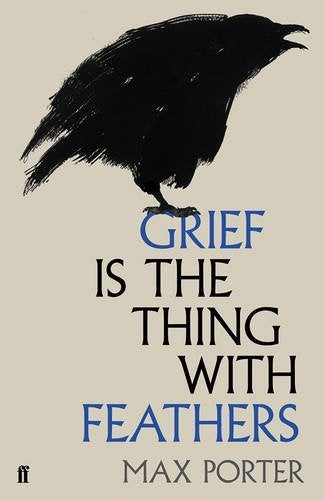Grief is the Thing with Feathers, by Max Porter - book review: In Hughes’ shadow
Faber & Faber - £10

Some writers would content themselves with one linguistic form for a debut novel. But perhaps as a consequence of his day job as senior editor for Granta, Max Porter couldn’t restrict himself to a straightforward narrative. Instead, he chose none at all. Grief Is The Thing With Feathers is billed as “part novella, part polyphonic fable, part essay on grief”. It is a cacophonous snapshot of the trauma felt by a family after the sudden death of their mother, told alternately by “Dad”, the “Boys” – and “Crow”. Porter’s conceit is to turn the emotion of grief into a black bird, who swoops into the bereaved family’s life in “a rich smell of decay, a sweet furry stink of just-beyond-edible food, and moss, and leather, and yeast”.
This deluge of sensation is typical of Porter’s description throughout the book, particularly in Crow’s sections. It is sometimes a slog to trawl through paragraphs in which Porter appears to have been unable to cut a single superfluous adjective. And having to break off continually to Google Ted Hughes doesn’t help. For the “crow as grief” conceit is not Porter’s invention. After Sylvia Plath’s suicide, Hughes stopped writing. Crow: From The Life and Songs of Crow, a collection of poetry composed 1966-69, was his means of working through his grief. Unfortunately Porter relies a little too much on the reader’s knowledge of this. “Fourteen months to finish the book for Parenthesis Press; Ted Hughes’ Crow on the Couch: A Wild Analysis ... Parenthesis hope my book might appeal to everyone sick of Ted & Sylvia archaeology,” writes Dad. Suddenly, every abstract turn of phrase that had before simply alienated seems decipherable – given a good working knowledge of mid-20th century modernist/post-modernist poetry.
Then there’s that title. Those unversed in modernist poetry might presume it a line from Hughes’s Crow. In fact, it is a riff on a poem by Emily Dickinson, “Hope” is the thing with feathers. In Dickinson’s poem, hope in the form of a bird is omnipresent and self-sustaining. Porter’s appropriation of the metaphor darkens Dickinson’s positive little poem. Grief, once suffered, will never leave entirely – but it can gradually morph into something more bearable. It is just a pity that the guiding metaphor “Crow” is so obviously used to make this point: at worse an annoying distraction from an otherwise touchingly simple expression of human grief.
Subscribe to Independent Premium to bookmark this article
Want to bookmark your favourite articles and stories to read or reference later? Start your Independent Premium subscription today.

Join our commenting forum
Join thought-provoking conversations, follow other Independent readers and see their replies